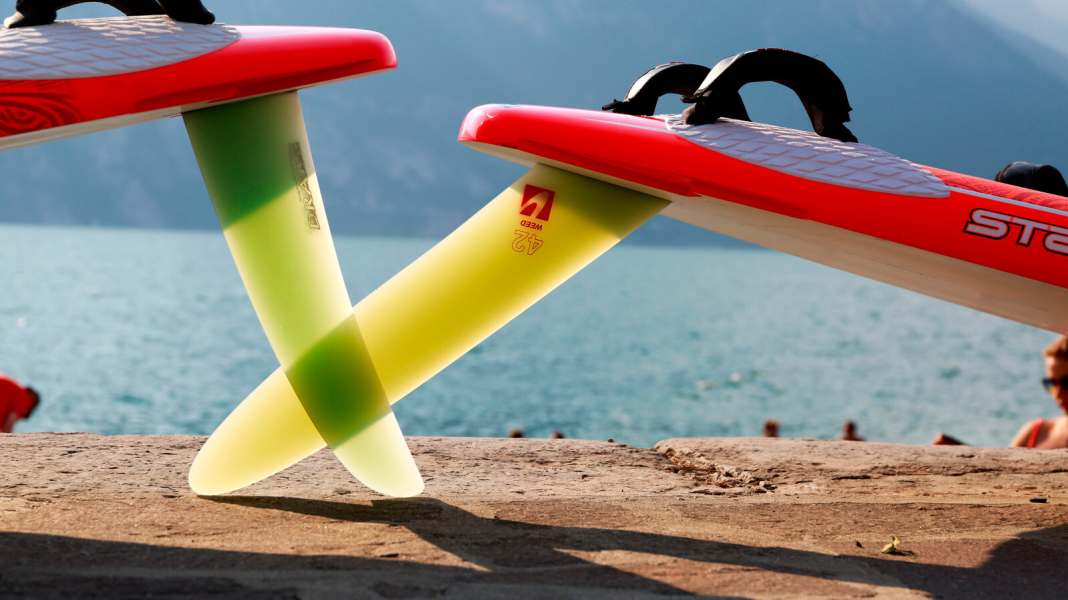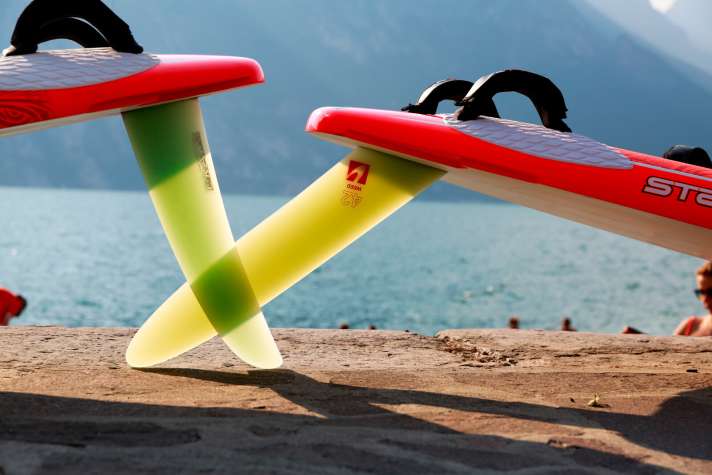Tuning test 2016: High-end fins


Chassis tuning is the most expensive way to subsequently impair the driving characteristics of a car. 20 percent more "sport" and 30 percent less ride comfort is often the dry result of any tinkering with tyres, rims, springs or dampers. Does this also apply to fins?
If you want to test how much can be increased by fin tuning, the genes of the other material must be right first. Because "you can't make a racehorse out of an old donkey" - a €200 fin in a 1998 F2 Xantos is therefore probably a waste of money. Our test boards, two Starboard Carve 131s, are known as fast, free-running freeride boards, the standard fin works well, but - as is often the case with standard equipment - is designed more for the larger usable sails. So there should be something to be gained. There are also plenty of accessory fins from the racing sector for the Tuttle box. The comparison sails NeilPryde RS:Racing Evo7 in 7.8 are unthrottled and beyond any doubt, the weakest link in the chain remains the human being.
Performance tuning
First run: We test ourselves first - with completely identical material from the standard fin to the mast plug. There is about one km/h between us, both in top speed and in the 10-second average. This is a basis from which we can work and which, based on our experience, seems normal in these conditions (medium wind, fairly large sails: my larger test partner is faster). We are now surfing at around 47 km/h, and for the given conditions - medium wind range, lots of chop and freeride boards - we are actually satisfied. I am now upgrading further.
The influence of the high-end fins can be found below in the free PDF download.
